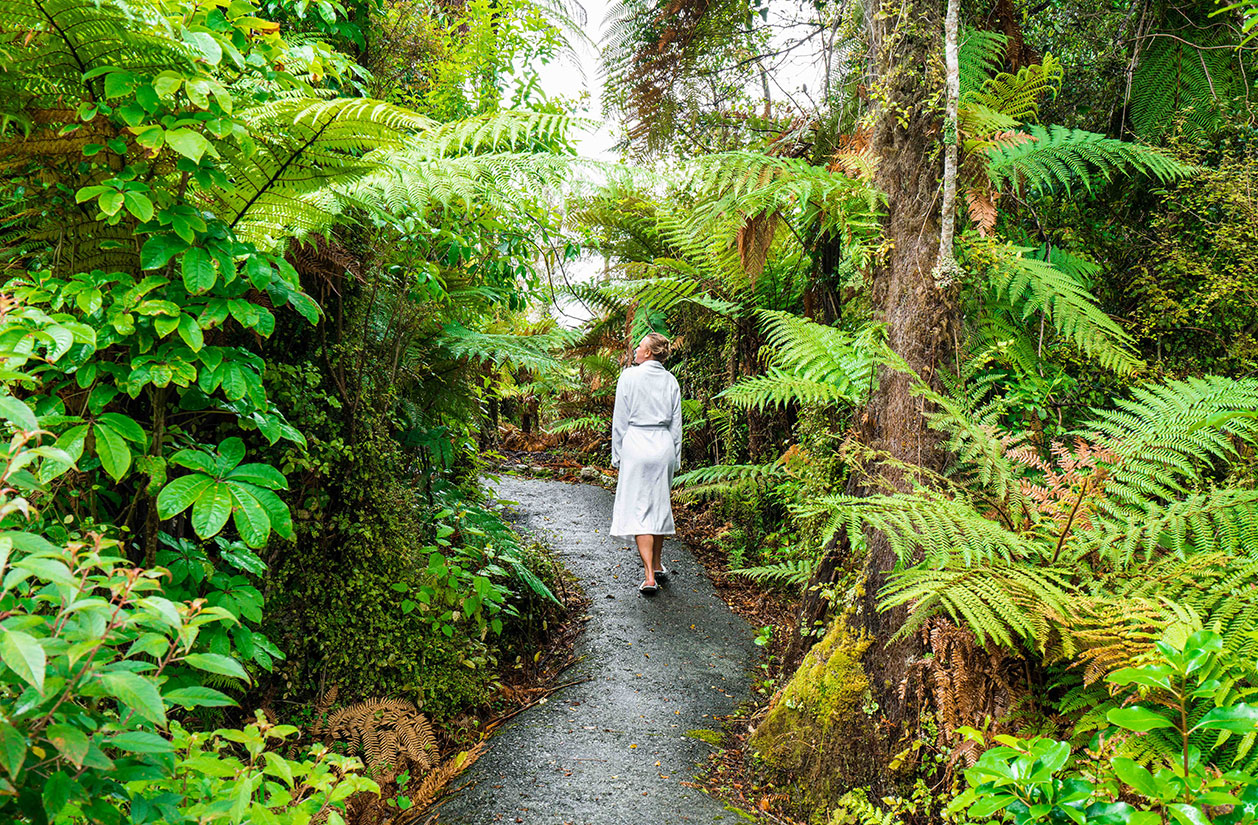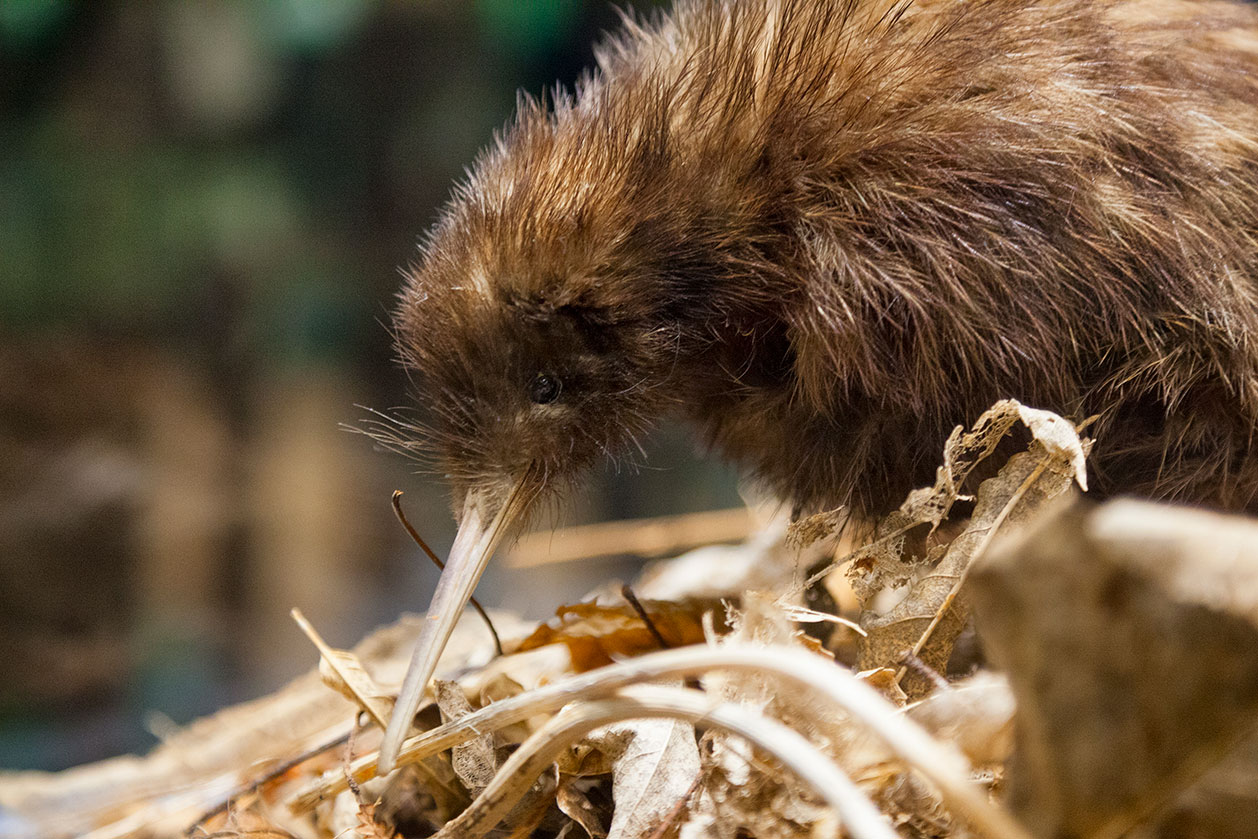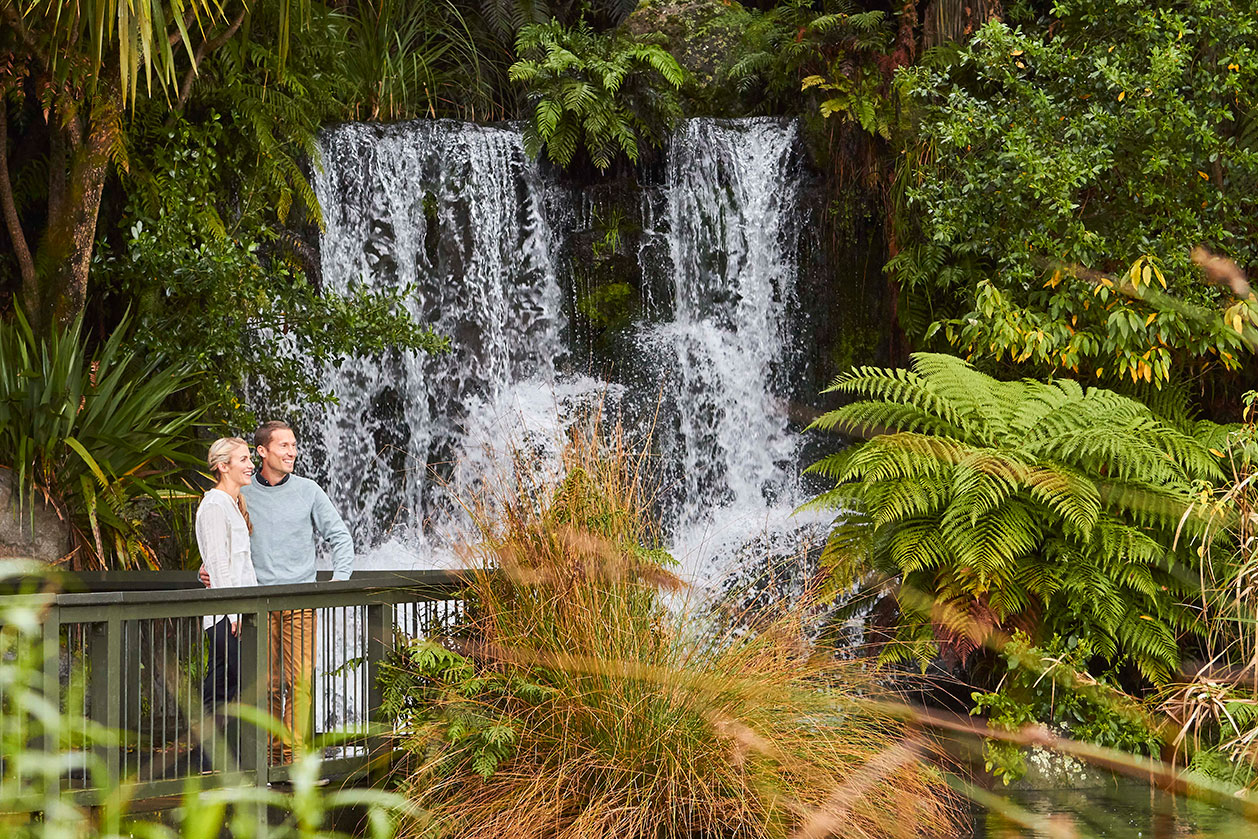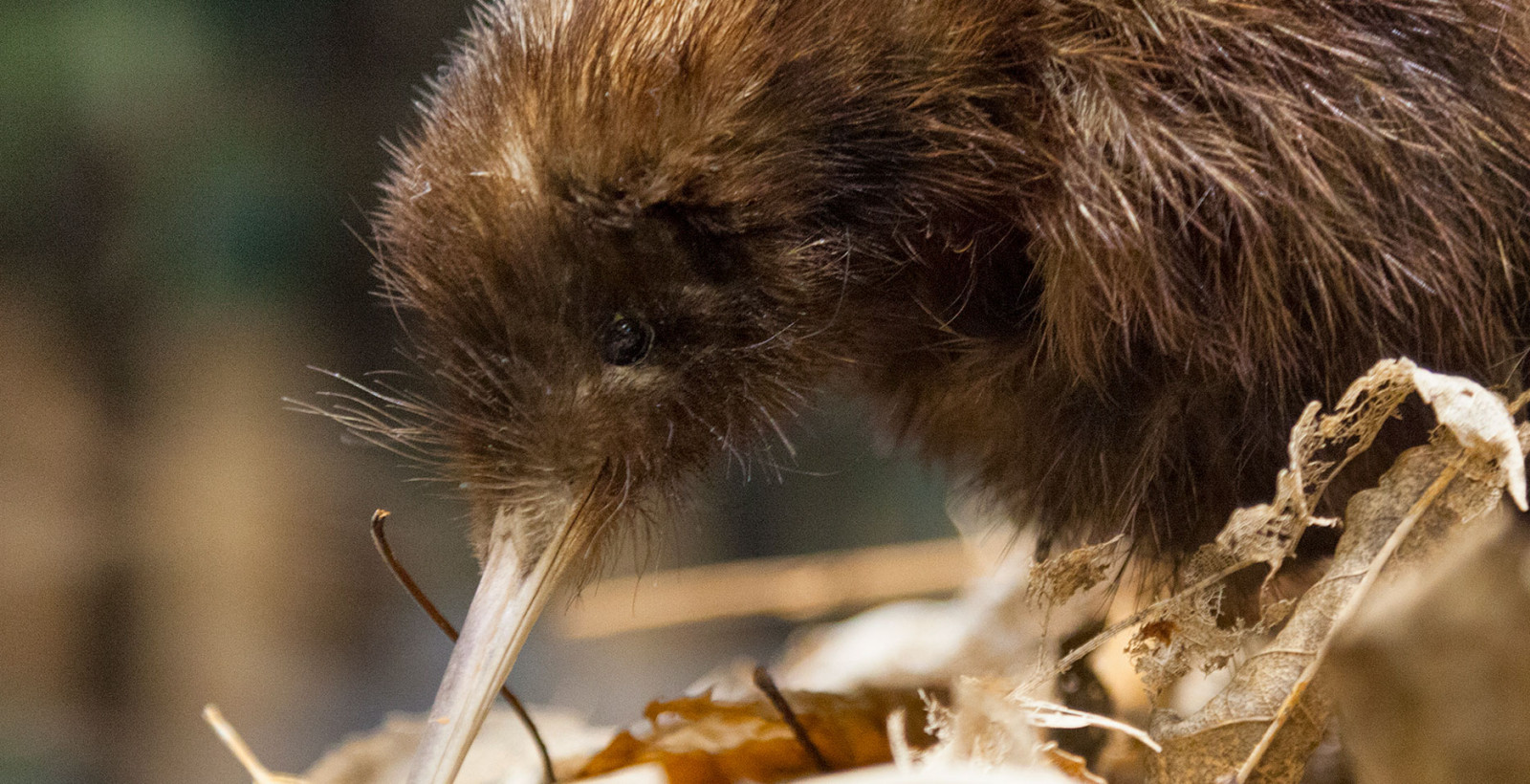New Zealand Kiwi Bird Facts
-
Author Inspiring Journeys
-
Date 30 Mar 2023
WHEN you think about it, the kiwi is one special little ball of feathers.
Not only is it New Zealand's national bird and unofficial emblem, but this flightless fowl that's about as simple to spot in the wild as the pangolin and giant panda has given its name to folks hailing from the antipodean address on the eastern side of the Tasman Sea.
New Zealanders are, thanks to this idiosyncratic little creature, called Kiwis with the nickname sticking after first being bestowed on the country's soldiers during the Great War.
And it's a nickname Kiwis claim is 100 per cent appropriate, with those carrying the all-black passport as unique and quirky as the bird.
But did you know five species of kiwi are knocking around the Land of the Long White Cloud? There's the little spotted kiwi, great spotted kiwi, brown kiwi, rowi and tokoeka. With each sticking close to a different corner of the country.
Or that the average kiwi is the same size as a chicken, with the female outgrowing men to be the statelier of the sexes. And a kiwi's egg is about six times larger than one laid by a hen – making it about 12cm long and 8cm wide – which goes a long way to explaining why the matriarch has the superior stature.
IT'S ALL ABOUT BIOLOGY
Scientists tell us the female kiwi bird has two ovaries, while most other birds only have one, and that a single egg occupies a whopping 20 per cent of her body.
It takes between 70 and 80 days of around-the-clock incubation for a baby to hatch – that's more than twice the time for other members of the avian kingdom, and closer to the gestation period for a mammal that's around the same size – with a chick emerging wearing all its feathers.
Kiwis have marrow in their bones just like humans, whiskers similar to cats, feathers that are more like fur, use their sense of smell to navigate at night, and are the only bird in the world to be built with nostrils at the end of their beak.
Read on to learn a few more facts about the bird that gave its name to a nation.
WHAT IS THE KIWI BIRD HABITAT?
The elusive kiwi is a forest-dwelling creature with a penchant for territory that's not only steep, soggy and secluded but wearing a heavy cloak of the shrubs and trees that offer some protection from the elements.
The monogamous birds make a home in earthen burrows deep below the shrubs, because they cannot fly to nest in the safety of the trees, and employ sturdy toes and sharp claws to dig out the dirt and disappear into the depths.
An industrious kiwi will dig up to 50 dwellings every year and return to a nest constructed early in the season when it's time for the female to lay her eggs. By then, the hole has been sitting empty for long enough to let the foliage growing on the forest floor camouflage the burrow's entrance and provide a little more protection from predators.

WHERE'S THE BEST PLACE TO SEE A KIWI IN THE WILD?
Stewart Island – the third largest of New Zealand's islands, sitting 30km from the southern tip of the South Island across the Foveaux Strait – is often called the country’s Galapagos because it's home to a vast array of the country's native and endangered bird.
The magical destination is also known as Rakiura – or "land of the glowing skies" because it's not unusual for the Aurora Australis to spread neon displays across the southern sky when conditions are right – and 85 per cent of the island 2000sq/km is protected by a national park with the same name.
Stewart Island, and neighbouring Ulva Island, which is now famously a predatory-free sanctuary, are home to more kiwi than people with the critters likely to emerge for those people patient enough to sit silently to see them pottering around the forest.
And, while it's not unusual for the ground-dwelling birds to be about during the day, those set on seeing one in the wild are in for an after-dark excursion with the chances dramatically increasing during night-time.
ARE KIWI BIRDS ENDANGERED?
Experts estimate there are around 68,000 kiwi birds left in the wild, but that number is decreasing by 2 per cent every year – or roughly 20 kiwis every week – with both natural and manufactured threats reducing the population that seeks safety in seclusion.
The Department of Conservation explains that because kiwi birds can't fly, have under-developed wing and chest muscles, and lack a sternum they are "particularly vulnerable to crushing injuries" like those caused by dog bites.
"The biggest threat to kiwi chicks is stoats, and to adult kiwi it's dogs. Cats also kill kiwi chicks, and ferrets frequently kill adult kiwi," the Department's website explains.
“Introduced mammals can also have a wider impact on kiwi. Competition by rodents for similar food appears to delay growth of kiwi chicks which increases pressure on the overall population at some sites. Rats are food for stoats – when there are lots of rats, there are lots of stoats.
"Threats include habitat loss and motor vehicle strike, as well as the small population size and distribution of some species. New avian disease and parasites that may reach New Zealand present a further threat to kiwi populations."
The brown kiwi, which can be found through the North Island’s lowland and coastal forests, is one of New Zealand’s most common species but the population is dramatically declining by up to three per cent a year. The experts now estimate that, without on-going intervention and support, the variety will be extinct in the wild within two generations.
But it's not all bad news with the Department explaining areas where threats are being managed, and even eliminated like Ulva Island, kiwi numbers are increasing with the population on The Coromandel "doubling every decade thanks to intensive predator control".

HELPING KIWI BIRDS IS HOW WE MAKE TRAVEL MATTER®
Inspiring Journeys is deeply devoted to supporting sustainable travel and working with grassroots organisations right around this big rock we call home to preserve and protect the places we visit.
We partner with The TreadRight Foundation – a not-for-profit organisation created by our parent company The Travel Corporation, and supported by each of the family’s 42 brands – to promote responsible tourism practices.
How We Tread Right is part of the Foundation's five-year strategy toward sustainability, and it's our target to tempt with thoughtful travel experiences that are culturally conservative and environmentally appropriate while funding initiatives that benefit people, planet and wildlife.
We aim to ensure 50 per cent of itineraries feature at least one MAKE TRAVEL MATTER® Experience by 2025. In New Zealand Inspiring Journeys, and our sister brand AAT Kings, supports the National Kiwi Hatchery which is working tirelessly towards kiwi management.
HELP US HATCH KIWI
The National Kiwi Hatchery at the Rainbow Springs Nature Park in Rotorua plays a role in kiwi conservation at the earliest stage of life by stepping in to support newborn chicks through the months they are most prone to predators.
Most baby kiwis don't survive childhood in the wild – they become prey to stoats, wild dogs, cats, rats and even ferrets – and juveniles mature slowly to take between three and five years to reach their adult size.
This is where National Kiwi Hatchery staff – now considered leaders in husbandry, egg-incubation systems, hatching techniques and chick raising – step in and retrieve eggs from wild nests to be nurtured until the babies are robust enough to have a fighting chance in the bush.

CLOSE ENCOUNTER OF THE KIWI KIND
Inspiring Journeys understands not every traveller has the time to hibernate in a Stewart Island hide, waiting to spot a wild kiwi bird going about its business, so has built a close encounter into those itineraries traversing New Zealand's North Island.
Guests joining The Long White Cloud, an epic 19-day expedition across the country that starts in Christchurch and visits iconic locations and hidden gems across both islands before finishing in Auckland, visits the National Kiwi Hatchery during a two-night pause in Rotorua.
During the outing we receive rare insights into the conservation effort being backed by TreadRight and see incubating eggs, watch the hatching process, and meet kiwi chicks being supported until they reach 1kg and can be released back into the wild by Department of Conservation staff.
Inspiring New Zealand – a shorter 10-day tour from Auckland to Queenstown via Wellington and Fiordland National Park – also takes in the Rainbow Springs complex during a three-day stay in Rotorua.
Holidaymakers set on seeing just the North Island won't miss out on our kiwi MAKE TRAVEL MATTER® Experience with The Endless Shore also featuring a two-night break in Rotorua that calls upon the Rainbow Springs Nature Park before an evening at Tamaki Maori Village.
This adventure dedicates eight easy days to exploring from Wellington and Auckland, with four two-night stays included in the itinerary to let guests linger a little longer in destinations between the country's capital and largest city.
